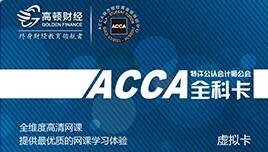2012年ACCA考试《F9财务报告》讲义辅导(4)
Discounted Cash Flow (DCF) methods
The Net Present Value (NPV) and Internal Rate of Return (IRR) are the two investment appraisal methods under DCF. Let us now describe and comment upon the two methods.
Net Present Value (NPV) Method
Of all the investment appraisal methods, NPV is often argued to be the most superior. This is because it takes into account the time value of money. The method assumes that a pound today is worth more than a pound this time next year. It works under the assumption that if one is owed a pound and the borrower offers a choice of either giving the pound now or in a year?s time, the more rational option for the lender is to take the pound now. Provided the lender does not keep the pound under his mattress at home, it will be worth more than a pound in a year?s time. The reverse is true if the borrower has the option to pay either now or in a year?s time, the borrower would choose to pay in the future as the pound he/she pays in the future will be worth less than what he/she would have paid now. It stresses that future cash flows should be expressed in terms of what they are worth now when cash is expended on the project. The present values of these future cash flows can then be compared with what we are spending now on the project. In other words, the NPV is saying that one should compare like with like, which of course is a fair statement. By setting the future cash inflows from the project without discounting them against the initial capital cost, one is not being realistic and fair.
When present values of cash outflows and inflows are compared, if the result gives a positive NPV, then the project should be recommended. In a mutually exclusive situation, that is, when you can only undertake one project and not two projects at the same time, if two projects were to give positive NPVs, then the project with the higher NPV is the one to recommend.

相关阅读
ACCA考试中的F3考试学习技巧2013/08/07
ACCA考试中的F1考试学习技巧2013/08/07
2012年12月ACCA考试F4考试考官报告2013/06/19

















